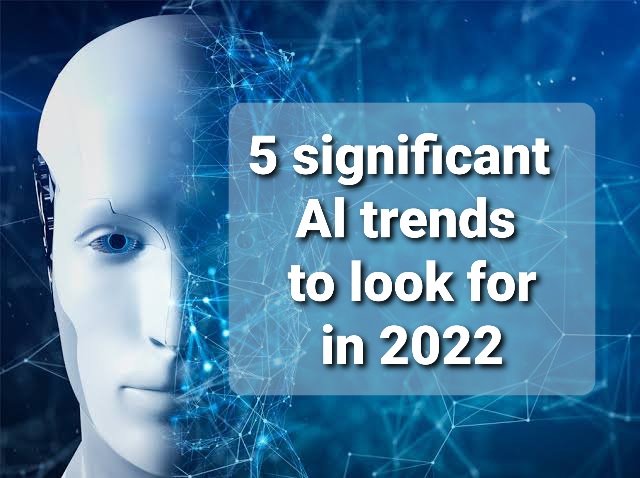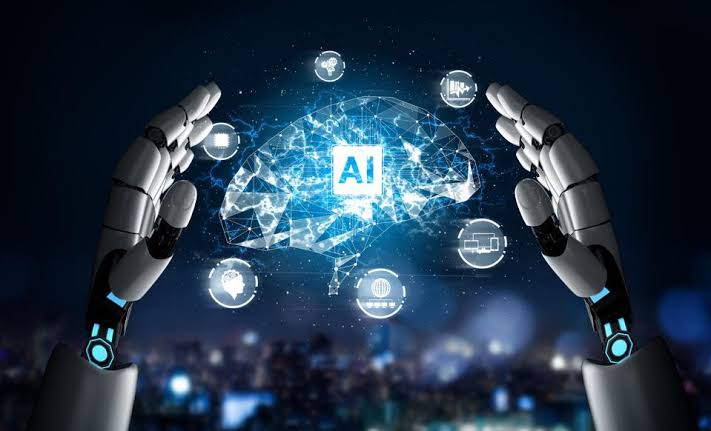
5 significant AI trends to look for in 2022
This article will discuss artificial intelligence (AI) trends for the corporate landscape in 2022, but readers should keep in mind that businesses are still dealing with the pandemic, as well as labor shortages, the economic crisis, and a variety of other issues. While some firms around the world have come out stronger as a result of these global crises, many have not, but new technology have altered the way we live and work for practically everyone.
The years 2020 and 2021 taught us that technology can be a lifesaver and a crucial guide during a crisis. Artificial intelligence, machine learning, and related technologies have the ability to turn old business models into highly streamlined, cost-effective, and efficient workflows.
The “intelligent” component of the intelligent digital mesh mostly relates to AI, machine learning (and related technologies), as these two technologies power the “brains” of smart machines to generate economic value. AI and machine learning work together to enable robots to replicate human thought and duties in the intelligent digital world of business. Businesses have learned to trust new technologies and to support business models that are based on them.
The following data indicate the progression of ideas mentioned in this discussion of artificial intelligence and machine learning trends in 2022:
- Ninety-three percent of the United Nations’ environmental sustainability targets can be met with artificial intelligence.
- With the present rate of adoption, sustainable AI systems have the potential to produce 38.2 million jobs globally.
- The global AI-driven cybersecurity market is expected to develop at a CAGR of 23.6 percent from 2020 to 2027, reaching $46 billion by the end of the forecast period.
- While 51% of businesses plan to use AI to automate tasks, 25% of businesses have already done so.
- In 2020, 80 percent of executive personnel will be focused on increasing business process automation projects.
- In 2020, 80 percent of executive personnel will be focused on increasing business process automation projects.
- By 2023, 40% of large organizations’ infrastructure and operations (I&O) teams will be using AI-powered augmented solutions, with the goal of freeing up IT professionals for more strategic work.
- According to a McKinsey report from 2020, 66 percent of organizations increased revenue as a result of their AI systems.
- In 2021, 74 percent of organizations budgeted $50,000 or more for AI initiatives, up from 55 percent in 2020.
- Every organization is expected to have 35 AI projects in development by 2022.
- By 2023, AI experts must demonstrate a thorough awareness of ethical AI concepts in order to keep their jobs.
5 significant AI trends to keep an eye on in the coming years

In 2022, plenty of AI innovations are expected to take over the commercial world. The following are five significant AI trends to keep an eye on in the coming years:
Augmented Business Processes and Systems:
In order to attain operational excellence, cost efficiencies, and resilience, all forms of automated systems driven by AI, such as augmented Data Management and augmented analytics, will be boosted in 2022. AI-assisted automation will be a dream come true for organizations thanks to the combined influence of cloud, robotic process automation (RPA), and IoT.
Responsible AI Is Taking Off:
Svetlana Secular, Research Vice President at Gartner, states, “Responsible AI helps achieve fairness…” Certain industries are increasingly demanding that automated decision-making systems be able to explain their reasons. Furthermore, such choices must be made without any bias.
AI algorithms have already been used to prevent cyber assaults, monitor corporate networks, detect malicious software, and a variety of other applications. Smart hackers are now causing problems for business users by manipulating data used in model training, gaining access to sensitive data via reverse engineering AI systems, and detecting security flaws in corporate networks. Businesses increasingly seek AI solutions that closely scan all data used for model training and incorporate unique security aspects into AI models to combat these cyber risks.
Artificial Intelligence (AI) in Cybersecurity:
Artificial Intelligence (AI) for Environmental Threats: By 2022, corporations and governments will have implemented sophisticated AI solutions to tackle carbon emissions, fossil fuel use, global warming, and deforestation. One example is Google, who used deep learning to improve the cooling of its data centers.
Healthcare Automation:
By automating human labor, healthcare delivery systems will enable care providers to make faster and more accurate judgments, assist pharma companies in bringing high-quality goods to market in record time, streamline healthcare system operations, and save costs.
